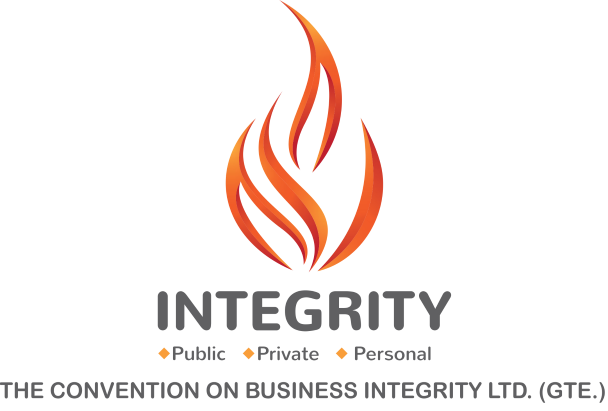The CBi methodology of integrity rating
The principal aim of the rating is to explore the underlying values guiding an organization’s business conduct and how these values are translated into visible actions. Often, an organization claims to have a distinct set of values but does not act accordingly. Therefore, the methodology of the integrity rating must apply a strategy which enables the assessment of the ‘true’ level of the signatory’s integrity. However, as the renowned Professor Johann Graf Lambsdorff8 has stated, a value system cannot be assessed in a ‘check-box manner’. An organization’s consistency in word and action needs to be examined by extensive and profound analysis.
In order to overcome this challenge, CBi has developed an innovative methodology. It employs a multi-stakeholder approach which combines typical, compliance-driven assessment (indicators, program components, etc.) with perception-based information. The following graphic visualizes the various stakeholders and information sources included in the CBi integrity rating methodology:
This graphic illustrates that the CBi integrity rating methodology comprises four components (boxes shaded in orange)
1. Self-assessment (mandatory) Self-assessment by the signatory is based on a structured questionnaire which comprises checklist questions as well as open questions for anecdotes and explanatory cases along the above-mentioned five Integrity Stars. The self-assessment is targeted at the top management because it has been commonly recognized as the most significant indicator for the way decisions are made in different levels and departments of the business. Several academic studies have shown how organizational culture has been influenced by top management. The self-assessment will not be considered in the actual determination of the integrity rating (Integrity Stars). However, it provides a valuable benchmark of the signatory’s top management perception against the stakeholders’ view on the performance vis à vis integrity.
2. External assessments (mandatory)
The external assessment is based on a structured questionnaire which reflects the different levels of Integrity Stars (similar to the questionnaire used in the self-assessment). It includes checklist questions as well as open questions for anecdotes and explanatory cases. The external assessment is targeted at six stakeholder groups of the signatory:9
Internal employees
Customers
Suppliers
Investors / Creditors
Public Service Providers (e.g. National Stock Exchange, public utilities, etc.)
Other (e.g. joint-venture partners)
The stakeholders that will be questioned during the external assessment are randomly selected by the CBi Secretariat in order to ensure independence. Stakeholders respond on an anonymous basis.
An external, independent consultant conducts the assessment of the questionnaires.10 3. Reputational assessment (mandatory) Reputational assessment is based exclusively on the perception of the CBi Reference Group, whether the signatory is committed to the principles and standards of CBi. The reputational assessment is independent from the results of the external assessment, as the information from the self- and external assessment is withheld from the CBi Reference Group until the reputational assessment is completed. 4. Ad-hoc assessments (optional) Additional assessments may be conducted by the CBi Secretariat at their own discretion. This may include additional in-depth interviews with stakeholders, internet research and/or review of further documents provided by the signatory. These four components are used to determine the integrity rating (displayed by one of the five Integrity Stars) on an annual basis. It is noteworthy that CBi conducts an integrity rating and not an integrity ranking; signatories are not compared or put in an order of integrity.

